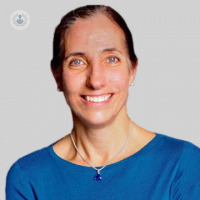Bilateral breast reduction: a comprehensive guide
Written by:While some people may consider having large breasts to be an asset, for many women they can be a source of discomfort, unwarranted attention and dissatisfaction. Leading consultant reconstructive, plastic and cosmetic surgeon Miss Caroline Payne provides a guide to the procedure, including an explanation of why women choose to undergo the operation, the techniques available and the postoperative period.

Is there a specific type of patient that favours breast reduction?
Numerous patients, of various ages and sizes, visit my clinic to explore bilateral breast reduction. While their backgrounds differ, most share common symptoms such as upper back pain, shoulder discomfort, shoulder grooves, poor posture, rounded shoulders, and difficulty wearing specific bras. Additionally, they may experience pain underneath the breast, occasional infections in that area, and general discomfort in the upper chest.
Why do women choose to undergo bilateral breast reduction?
Women who decide to undergo bilateral breast reduction choose to do so to try and alleviate symptoms linked to breast reduction. Additionally, they choose to do so because they often have, difficulty finding certain clothes to wear, especially ones that do up at the front, with buttons. They may be an upsize, meaning that they have to wear a bigger size at the top compared to the bottom.
These women ultimately decide to undergo breast reduction because their breasts can interfere with their general daily activities. For example, many of them want to swim, but are unable to find a suitable swimming costume due to their breast size, or when they go to the gym or sporting activity, may have to double bra just to support the weight of the chest.
What techniques are available for the procedure?
In my clinic, I use a superior medial technique, that retains the nipple on the breast without the need for removal. This involves repositioning the breast tissue to the upper part of the chest, allowing for the removal of both inferior and lateral weight.
This involves repositioning the breast tissue to the upper part of the chest, allowing for the removal of both inferior and lateral weight. While this method yields effective results, it does result in scars around the nipple, along the breast, and underneath. While I cannot provide an absolute size guarantee, the diversity among bra manufacturers in the UK ensures a definite reduction in size.
Complications may include bleeding and a change in nipple sensation, which may result in loss or asymmetry in approximately 3% of cases. Changes in breast skin sensation are also possible. Scarring, often concentrated toward the centre of the chest, may sometimes require steroid injections in extreme cases. Although rare, wound problems and infections can occur, and postoperative pain relief is primarily managed by wearing a suitable front-fastening bra.
What happens during the postoperative period?
After the operation, patients are provided with adhesive dressings that remain in place for two weeks, and they should wear a supportive front-fastening bra for up to four weeks. Most individuals manage postoperative pain with paracetamol and ibuprofen. I advise patients to resume regular activities, such as walking and daily tasks, from day one. Engaging in sports may require a bit more time, preferably after the dressings are changed.
The entire operation, conducted under general anaesthesia, typically lasts about three hours, including the time spent in anaesthesia, recovery, and returning to the ward. Postoperative discomfort is primarily associated with anaesthesia recovery rather than the actual surgery.
The procedure typically involves an overnight stay. However, certain clinics, including mine, offer breast reductions as a day-case procedure. It is important for patients to return to normality as soon as possible following the procedure. Swimming is permitted when wounds are fully healed, and returning to the gym is advisable when the patient feels comfortable, with minimal bruising, adequate bra support, and no open wounds.
The majority of patients express satisfaction with the procedure, experiencing relief from various symptoms and significant improvements in their active lives, clothing choices, interaction with children, and overall self-esteem. Many find the operation positively impacts their comfort and reduces unwanted attention associated with having a larger chest.
If you are considering undergoing a breast reduction and would like to book a consultation with Miss Payne, do not hesitate to do so by visiting her Top Doctors profile today.


